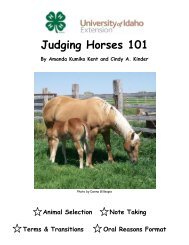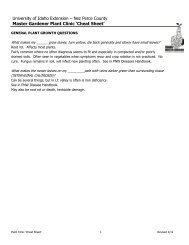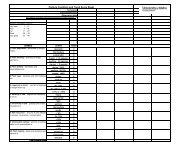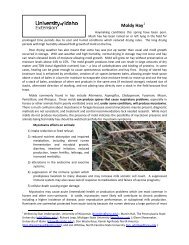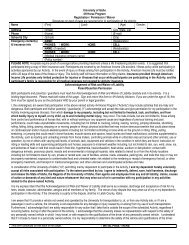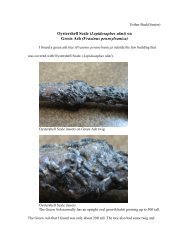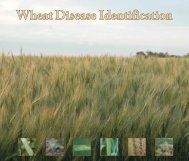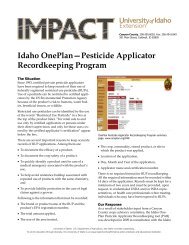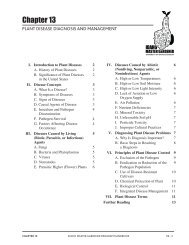Black Flies - Biology and Control - University of Idaho Extension (Ver ...
Black Flies - Biology and Control - University of Idaho Extension (Ver ...
Black Flies - Biology and Control - University of Idaho Extension (Ver ...
You also want an ePaper? Increase the reach of your titles
YUMPU automatically turns print PDFs into web optimized ePapers that Google loves.
Figure 1. <strong>Black</strong> fly egg masses with other<br />
immature life stages on aquatic plants.<br />
Figure 2. <strong>Black</strong> fly larva showing filter-feeding<br />
fans on head <strong>and</strong> bulbous posterior body<br />
segments; mature body size is 2/10-inches.<br />
Larvae feed by means <strong>of</strong> two small comb-like fans that filter algae, bacteria <strong>and</strong> fine particles <strong>of</strong> leaf<br />
debris or other organic matter suspended in the water. Larvae normally remain attached to submerged<br />
objects but can drift downstream several inches on silken threads if their habitat is disturbed. Long<br />
distance drift sometimes results in dramatic week-to-week changes in larval populations. Larvae molt<br />
(shed their skins) 7 to 11 times, each time growing to a larger body size. Full-grown larvae are<br />
approximately 2/10th-inches long.<br />
Mature larvae molt into a pupa (Figure 3), a non-feeding, non-mobile transitional stage during which the<br />
insect develops the body features <strong>of</strong> the adult fly. The pupa itself is enclosed within a slipper-shaped<br />
brownish silken cocoon that remains attached to the substrate under the water. Pupae breathe by means <strong>of</strong><br />
a pair <strong>of</strong> distinctively shaped tubular, branched gills that project forward from the head. Both the larval<br />
<strong>and</strong> pupal stages <strong>of</strong> Simulium vittatum <strong>of</strong>ten anchor themselves to submerged aquatic plants or on<br />
bank-side grasses <strong>and</strong> weeds that trail their leaves into the water. Pondweed (Potamageton pectinatus) in<br />
irrigation canals sometimes is completely covered with black fly larvae <strong>and</strong> pupae (Figure 4).<br />
Figure 3. <strong>Black</strong> fly pupa within slipper-shaped<br />
silk cocoon; tubular, finger-like gills project<br />
forward from head.<br />
Figure 4. <strong>Black</strong> fly larvae <strong>and</strong> pupae sometimes<br />
nearly cover aquatic plants.<br />
PHOTO CREDIT: Marni Porath <strong>and</strong> Kimberly<br />
Wallin, Oregon State <strong>University</strong><br />
Page 2 <strong>of</strong> 12



